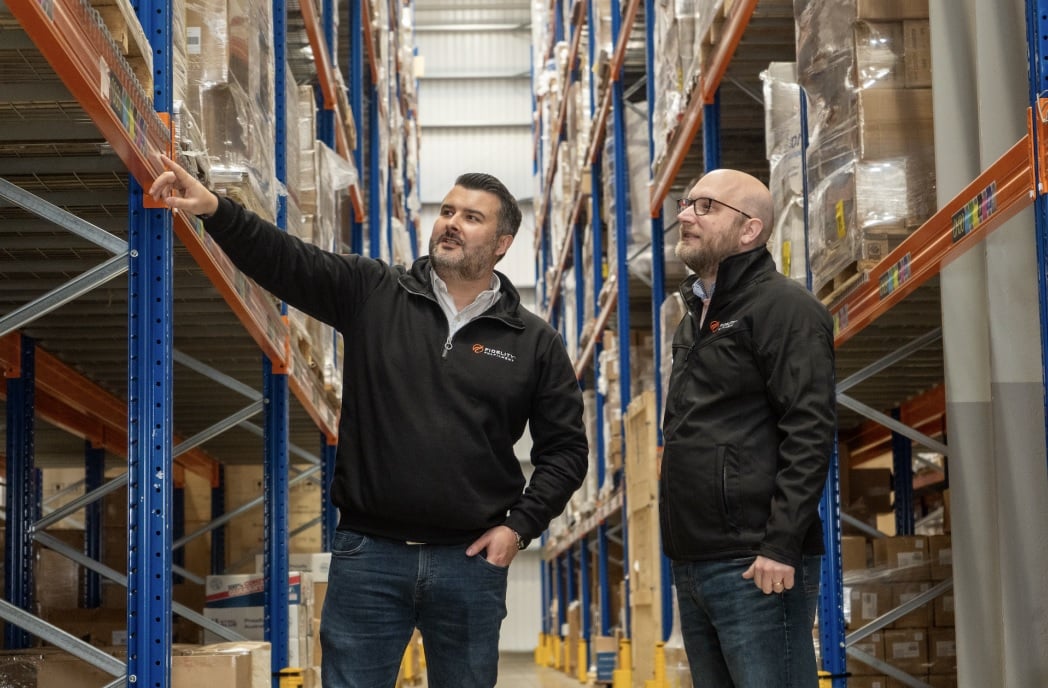RETAIL SOLUTIONS UK NEWS
8 October, 2025 | by Patrick Overall
By Stephen Williams, director and co-founder, Fidelity Fulfilment
Few industries have escaped the turbulence of shifting US trade policy and for UK and EU retailers, the latest round of tariffs has brought particular challenges. What began as a marginal adjustment in costs has now become a fundamental rethink of how brands actually approach the US market.
With tariffs introducing a baseline 10–20% increase on most exports, and some categories facing up to 30%, the impact is reshaping everything from sourcing and fulfilment to pricing and consumer engagement.
Margins under pressure
For many retailers, the removal of the $800 de minimis exemption has been just as disruptive as the tariffs themselves. Low-value shipments that once slipped under the customs radar are now subject to duty charges and a maze of documentation. Even small test orders and direct-to-consumer shipments – once an easy entry point into the US market – have become costlier and more complex.
Adding to the pressure, carriers are now applying clearance charges on top of duties, which can be significant for low-value shipments. Customers often end up not only paying the tax, but also an additional processing fee, sometimes even a margin on the duty itself.
The immediate effect is margin compression. Larger brands with deeper pockets are absorbing costs in the short term to protect market share, while smaller and mid-sized businesses face harder choices. Some have paused US exports altogether, others are passing costs on to customers incrementally, and a few are testing alternative markets where tariff risks are lower.
Categories under strain
Not all product lines are affected equally. Goods that depend heavily on Asian sourcing – whether in raw materials, packaging, or manufacturing – are bearing the brunt. Consumer products that rely on Chinese-made packaging or components, for example, face a double blow – higher tariffs on the finished product plus elevated costs for the packaging itself.
For retailers, this creates a difficult balancing act: customers expect shelves and online catalogues to be well-stocked and competitively priced, but supply chain costs are rising across the board.
Shifts in strategy
The traditional model of shipping small volumes directly into the US is quickly becoming unviable. Without the de minimis exemption, duties are applied to every shipment, and because import duties for direct-to-consumer deliveries are based on the sale price (not the cost price), retailers effectively pay tariffs on their own retail margin.
As a result, many businesses are moving toward bulk shipping and US-based fulfilment. By moving inventory into the country and storing it locally, retailers avoid repeated customs clearance while also improving delivery speed. At Fidelity Fulfilment, we’ve seen clients shave one to two days off their delivery windows simply by using local fulfilment hubs.
For others, a hybrid model works best: holding partial stock in Europe while maintaining US-based inventory to reduce tariff exposure and ensure faster fulfilment for American customers.
The role of technology
As complexity grows, so does the need for specialised support. Third-party logistics (3PL) providers are stepping in with integrated inventory management, customs expertise, and flexible fulfilment models that let brands test market viability without committing to large infrastructure investments.
Technology is playing a key role in helping brands adjust. Predictive analytics is being used to forecast demand more accurately, reduce overstock risks, and optimise inventory allocation across multiple regions. Fulfilment automation is also becoming a priority, with many brands investing in technology to offset rising operational costs and maintain service quality.
Regionalisation and risk diversification
Beyond fulfilment, sourcing strategies are shifting. Retailers are actively diversifying away from high-tariff regions, nearshoring production to Europe, and reducing reliance on Chinese manufacturing. This regionalisation not only reduces tariff risk but also builds resilience into supply chains.
Some companies are even reconsidering their US strategies entirely, choosing to double down on European markets or expand into Asia. So while the US remains an attractive destination, it is no longer the straightforward growth market it once was.
What comes next
Looking ahead, tariffs are accelerating structural shifts toward in-country fulfilment, regionalised sourcing, and technology-led logistics models. Success now depends on where retailers hold inventory, how they manage customs complexity, and which markets they prioritise.
While the road ahead may be challenging, opportunities remain. By embracing flexible logistics, smart technology, and resilient sourcing strategies, UK and EU retailers can continue to grow in the US, not by fighting tariffs head-on, but by building models that work around them.
